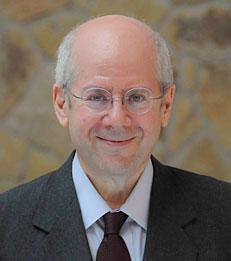Opinion
Bank resolution: The importance of a public backstop
—


...foreign regulators require reassurance that the evolving US resolution scheme will be a credible one.
By Kim Schoenholtz and Stephen Cecchetti
“…the ability of U.S. regulators to assume control of the resolution process may be required to elicit cooperation from non-U.S. regulators in countries where a recapitalized SIFI operates.”
Jane Lee Vris, Chair, National Bankruptcy Conference, (2017).
“Frankly, if we were left with a bankruptcy-code only solution [in the United States] it would be worrying.… We would have to [ask if] we really think there is a resolution mechanism in there that…has got what it needs to be effective.”
Andrew Bailey, CEO, UK Financial Conduct Authority, in Fleming et. al (2017).
The failure of Lehman on 15 September 2008, signalled the most intense phase of the Global Crisis of 2007-2009, fuelling a run on a broad array of intermediaries. Following Congress’ approval of the Troubled Asset Relief Program (TARP) funding that was used mostly to recapitalise US financial firms, the mantra of US regulators became “…we will not pull a Lehman”.1 Thereafter, to ensure that another large institution did not fail, policymakers chose bailouts to contain the crisis. As a result, today we still have intermediaries that are too big to fail.
The autumn 2008 experience convinced many observers of the need for a robust resolution regime in which financial behemoths could be reorganised quickly without risk of contagion or crisis. The question was, and remains, how to do it. Dodd-Frank provided a two-pronged answer: the Federal Deposit Insurance Corporation (FDIC) would first rely on the bankruptcy code (Title I); and second, on a resolution temporarily funded (if necessary) by government resources (Title II). The second piece is commonly known as Orderly Liquidation Authority (OLA), which is funded by the Orderly Liquidation Fund (OLF).
Read full article as published by VoxEU.
___
Kim Schoenholtz is Professor of Management Practice in the Department of Economics and Director of the Center for Global Economy and Business.
Jane Lee Vris, Chair, National Bankruptcy Conference, (2017).
“Frankly, if we were left with a bankruptcy-code only solution [in the United States] it would be worrying.… We would have to [ask if] we really think there is a resolution mechanism in there that…has got what it needs to be effective.”
Andrew Bailey, CEO, UK Financial Conduct Authority, in Fleming et. al (2017).
The failure of Lehman on 15 September 2008, signalled the most intense phase of the Global Crisis of 2007-2009, fuelling a run on a broad array of intermediaries. Following Congress’ approval of the Troubled Asset Relief Program (TARP) funding that was used mostly to recapitalise US financial firms, the mantra of US regulators became “…we will not pull a Lehman”.1 Thereafter, to ensure that another large institution did not fail, policymakers chose bailouts to contain the crisis. As a result, today we still have intermediaries that are too big to fail.
The autumn 2008 experience convinced many observers of the need for a robust resolution regime in which financial behemoths could be reorganised quickly without risk of contagion or crisis. The question was, and remains, how to do it. Dodd-Frank provided a two-pronged answer: the Federal Deposit Insurance Corporation (FDIC) would first rely on the bankruptcy code (Title I); and second, on a resolution temporarily funded (if necessary) by government resources (Title II). The second piece is commonly known as Orderly Liquidation Authority (OLA), which is funded by the Orderly Liquidation Fund (OLF).
Read full article as published by VoxEU.
___
Kim Schoenholtz is Professor of Management Practice in the Department of Economics and Director of the Center for Global Economy and Business.
